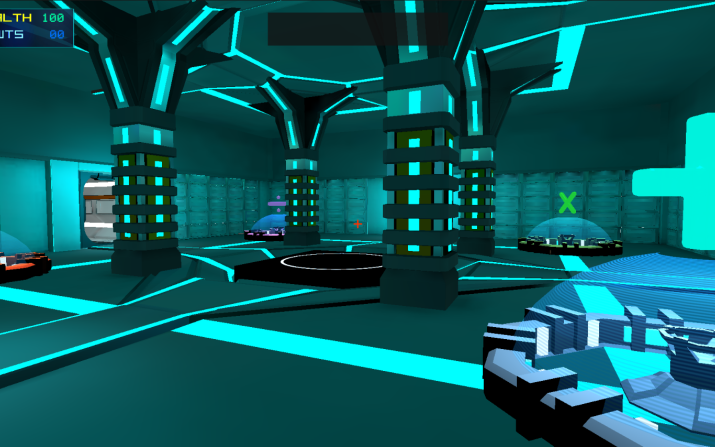Students create video game to teach local K-9 students math

Last year, Marcel Duvivier, Jeremiah Mubiru and Ana Perez Cespedes started developing a video game to help kindergarten through ninth grade students in the David’s Challenge program learn addition, subtraction, multiplication and division. This past spring, they finally had the chance to see the game in action.
“I didn’t think I’d really get the opportunity to make something that feels more real than a school project,” Duvivier, a fourth-year computer science student, said.
The project is a result of the diversity, equity and inclusion component of the Interschool Quantitative Biosciences Program (IQBP). The IQBP—a partnership between Case School of Engineering, the School of Medicine and the College of Arts and Sciences—is bringing together quantitative bioscientists from across the university to collaborate in research, education and the building of a more diverse STEM academy.
With a passion to bridge the gap that exists in STEM, Steven Eppell, associate professor of biomedical engineering, took the lead on developing the IQBP’s outreach programming. That’s when he met Faith Dickens, president and CEO of David’s Challenge, an after school program serving students from kindergarten through ninth grade in Cuyahoga County with a mission to provide them with programs and services designed to establish self-sufficiency and independence.
Now, a number of Case Western Reserve University students have contributed to David’s Challenge. In addition to the video game, graduate students have spent time tutoring and even rebuilding the nonprofit’s website. Eppell noted that all of them “have shown a real passion” to work with students and teachers in David’s Challenge.
“There is no way we could have paid for that type of expertise coming from Dr. Eppell and the students,” Dickens said. “We just don’t have that type of money. We rely on grants and to have a grantor buy into this, we’d have to continuously write grants for it. So, this service is invaluable to the organization.”
But, it isn’t just David’s Challenge that sees the benefits of this collaboration. Case Western Reserve students are seeing it too.
“It’s really useful to see how what I make is being interpreted,” Duvivier said. “The way you envision people playing and the way people actually play it are never really going to be the same. So it’s nice to see what sort of measures need to be put in place to get the experience that I want them to have.”
The video game Duvivier helped develop—currently titled “Math and Martians,” but soon to be changed by the student ranking highest on the leaderboard—guides players through a story that involves navigating a maze while solving the math problems. The lessons embedded into the challenge are catered to the students’ needs, based on conversations with their teachers and even Duvivier’s father, who is an elementary school teacher.
To win, students must accumulate points by successfully solving arithmetic problems. The number of points awarded for correct answers increases as the questions get more challenging. With the option to choose from three levels of difficulty, the game can be played by students in a range of learning levels.
“Oh, the students love it,” Dickens said about the game. “They absolutely love it.”
And the game development isn’t over yet. This summer, Duvivier and the team will continue improving the math machine—adding additional levels and categories and finding ways to make the game as engaging as possible.
“We designed the metrics to give students the sense they are improving,” Duvivier said. “We recently implemented a leaderboard to add in an element of competition and once we got that up, the K-5 kids were on task the entire time.”
Next, Eppell has plans to expand on the work they’ve done, applying for funding from the National Science Foundation so that their programs can be shared with teachers and students across the country.
“It’s been such a pleasure getting to work with the fantastic students we have here at CWRU,” Eppell said. “Perhaps what surprised me the most was how professional our undergraduate students who worked on the gaming project [are]. We met weekly for nearly a year. The students set goals, made suggestions and kept up with their project timeline month after month. Getting to spend time with them while we watched the David’s Challenge students stay on-task solving math problems for nearly an hour, all because of the [game] they created, was a sweet reward after all that hard work.”
About David’s Challenge
David’s Challenge is an organization created for the expressed purpose of addressing the various social, educational and economic needs of children, youth and young adults in Cuyahoga County. Formed to serve as a bridge between adolescence and adulthood, their mission is to provide transitional programs and services designed to encourage self-sufficiency and independence.
To learn more about David’s Challenge and explore volunteer opportunities, visit its website.

